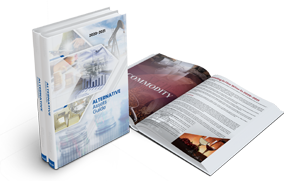
Never miss an important update |
Click to get notified about important updates only. |

99 Alternatives
Opportunities are Infinite
The theory of rational expectations (RE) is about the collection of assumptions about how economic agents or policymakers exploit available market information to form expectations.
The RE factor correlates with a certain type of representative expectations or agents.
A strong RE has an intuitive appeal where the economists create theoretical models based on assumptions to get a smart and well-informed economic model.
Pure Expectations Theory explains the movement of long-term interest rates by the market expectation for future short-term rates.
It means to maximize discount on a certain asset; the investors try to choose an optimum portfolio -
for purchasing and consecutive holding of bonds where maturity is equal to the planned investment term or rolling over short-term instruments or buying long-term bonds and selling such options before their maturity.
It is further classified into unbiased that maintain long-term interest rates are perfectly determined by market expectations for future short-term interest rates.
Expectation theory can be of two types – pure/unbiased and with risk premium and capital asset pricing model (CAPM).
CAPM was developed for risky asset holding, and it tries to create a cross-sectional relationship between the yields on various assets with different risk factors.
The concept of this model is that the yield of risky investments like alternative finance investment bonds can be described as the sum of the yield of safe assets and investments plus the relative risk factor associated with the asset class.
There are many other categories, like the constant risk premium, the liquidity, and the time-varying hypothesis.
Expectations play a key role in economic theories used to design macroeconomic models.
It is a central part of the planning related to economic life, starting from decision makings like how to buy a car, the amount of money spent on education, or others.
Adaptive models are based on past observations, and rationales are identical to forecasts made for macroeconomic theories.
Traditional structured - It follows the Keynesian paradigm that mainly features the adjustment of prices.
Rationale – It is the one that is consistent with the model structure.
The equilibrium business cycle assumes that labour and goods markets are always in equilibrium.
Vector autoregression employs a small number of estimated equations to summarise the dynamic behaviour of the entire macroeconomics.
Small vector autoregression - It is used to determine key economic measures.
Real estate remains one of the most time-tested...
From liquifying your asset to any time you want to have...
Impact investing in real estate is a growing trend with...
Whether buying your first home or selling your...
What is better Silver or Sterling Silver? We all know...
How much do Twitch Streamers Make? Man is fun-loving...
Copyright © 2025 99alternatives Ltd. All rights reserved.
Designed and Managed by Mont Digital


